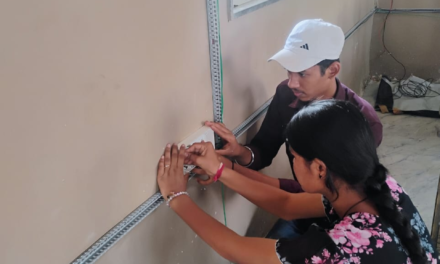## The Essential Guide to Plumbing Work: Tips, Tricks, and Best Practices### IntroductionPlumbing is an essential aspect of home maintenance, often overlooked until an emergency arises. Whether you’re a DIY enthusiast or just want to understand the basics, this guide will provide you with insights into common plumbing tasks, tools, and maintenance tips to keep your plumbing system in top shape.### Understanding Your Plumbing SystemBefore diving into plumbing work, it’s important to understand the main components of your plumbing system:- **Pipes**: Transport water to and from your home.- **Fixtures**: Sinks, toilets, and bathtubs that use water.- **Drains**: Remove wastewater from your home.- **Valves**: Control the flow of water.### Common Plumbing Issues1. **Leaky Faucets**: Often caused by worn washers or O-rings, these can lead to water waste and higher bills.2. **Clogged Drains**: Build-up of grease, hair, and debris can cause slow drainage or backups.3. **Running Toilets**: Typically a result of a faulty flapper or fill valve, this can waste a significant amount of water.4. **Low Water Pressure**: Can be caused by clogs, leaks, or issues with the municipal supply.### Basic Plumbing ToolsTo tackle most plumbing tasks, you’ll need a few essential tools:- **Plunger**: For clearing clogs in toilets and sinks.- **Pipe Wrench**: To grip and turn pipes.- **Adjustable Wrench**: Useful for tightening and loosening nuts.- **Plumbing Snake**: Helps to clear stubborn clogs in drains.- **Teflon Tape**: For sealing threaded pipe joints.### DIY Plumbing Projects#### Fixing a Leaky Faucet1. **Turn Off Water Supply**: Locate the shut-off valve under the sink.2. **Remove the Faucet Handle**: Use a screwdriver to take off the handle.3. **Replace Worn Parts**: Inspect and replace washers or O-rings.4. **Reassemble**: Put everything back together and turn on the water supply.#### Clearing a Clogged Drain1. **Use a Plunger**: Create a seal and plunge vigorously.2. **Try a Snake**: If plunging doesn’t work, use a plumbing snake to reach deeper clogs.3. **Consider Chemical Solutions**: As a last resort, use a chemical drain cleaner, but be cautious of potential damage to pipes.### Preventative MaintenanceTo avoid major plumbing issues, regular maintenance is key:- **Inspect Pipes**: Look for signs of wear or leaks regularly.- **Avoid Clogging**: Use drain covers to catch debris and avoid putting grease down the sink.- **Flush Your Water Heater**: This helps remove sediment build-up that can affect performance.### When to Call a ProfessionalWhile many plumbing tasks can be handled on your own, some situations are best left to professionals:- **Major Leaks**: If you notice water pooling or significant leaks, call a plumber immediately.- **Sewer Issues**: Problems with your main sewer line require professional assessment and repair.- **Complex Installations**: For new plumbing installations or major renovations, hiring a licensed plumber is advisable.### ConclusionUnderstanding the basics of plumbing can save you time, money, and headaches down the road. Whether you’re tackling a minor issue or planning preventative maintenance, having the right knowledge and tools can make all the difference. Remember, while DIY is great, don’t hesitate to call in the pros when needed. Happy plumbing!



